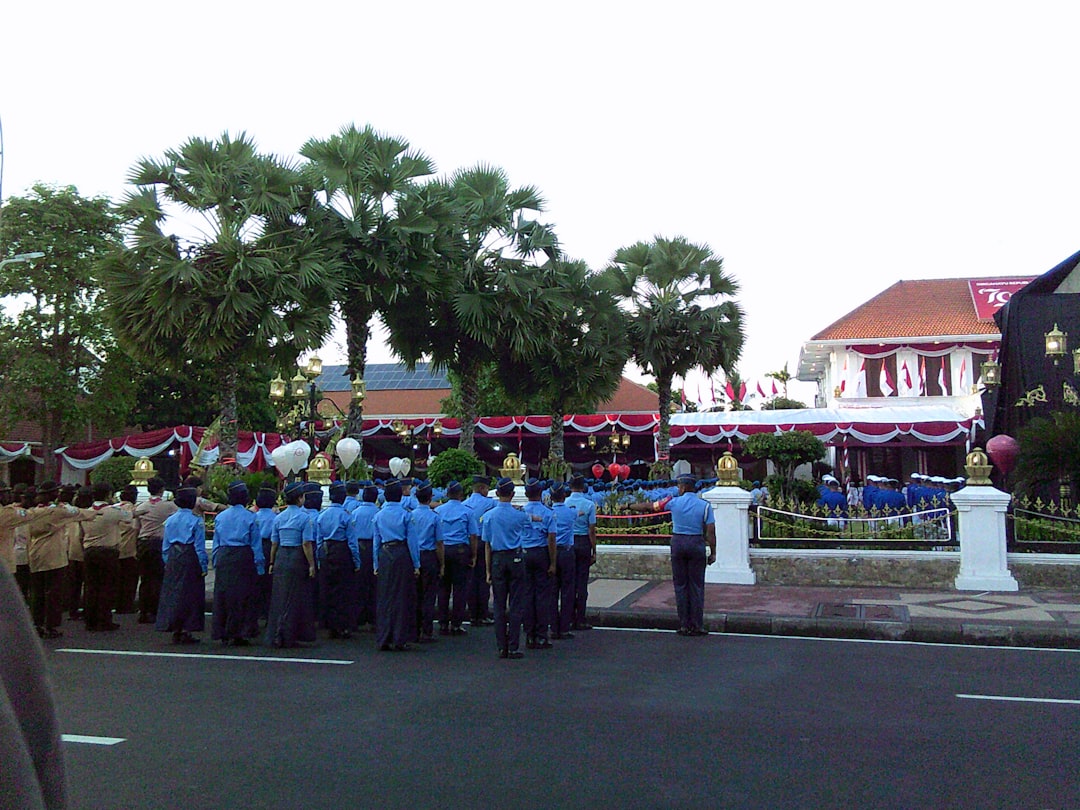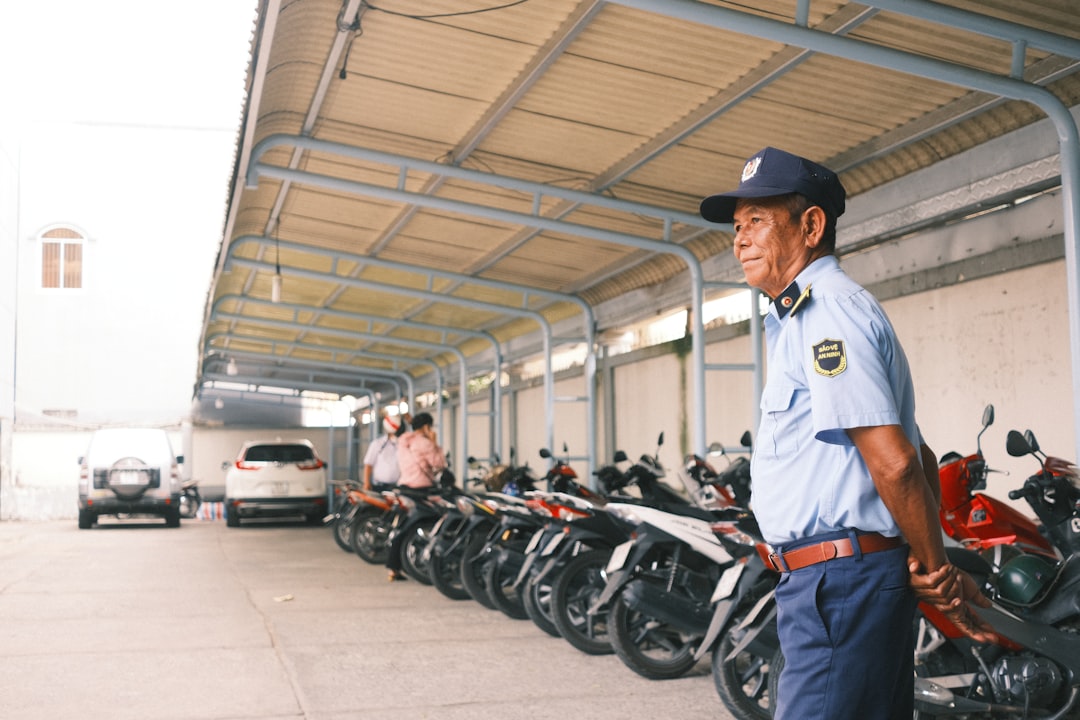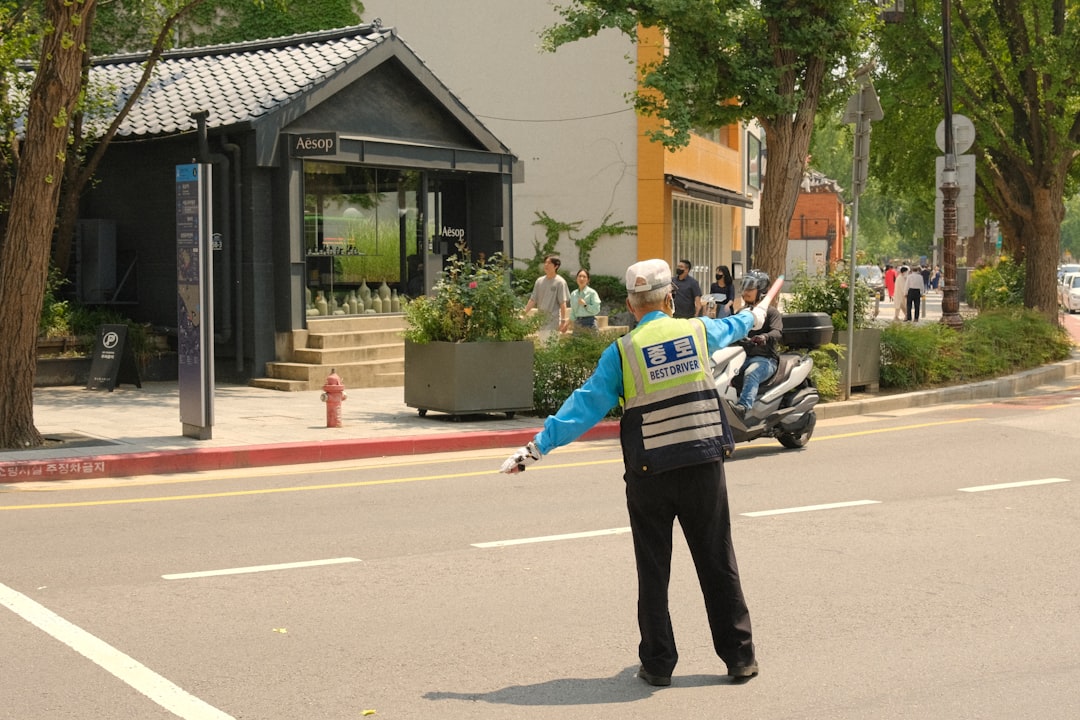

Engage prospects with a scan and streamline customer engagement with FREE QR code marketing tools by Sona – no strings attached!
Create a Free QR CodeFree consultation

No commitment

Engage prospects with a scan and streamline customer engagement with FREE QR code marketing tools by Sona – no strings attached!
Create a Free QR CodeFree consultation

No commitment
QR codes have evolved into a strategic powerhouse for bridging offline engagement with online action. For security guard services, QR codes offer effective and frictionless solutions for improving patrol management, enhancing guard tour tracking, and enabling secure, contactless access aligned with QR cyber safety best practices. This technology supports operational efficiency and physical security, meeting immediate business goals while delivering long-term value.
Service providers face challenges such as ensuring real-time patrol visibility, reducing paperwork, missing high-value activities due to manual reporting blind spots, and capturing accurate security data. Many organizations still lose critical incident or patrol details because activities are not tracked centrally, resulting in lost opportunities for optimization and accountability. QR codes are streamlining manual tasks, minimizing overlooked patrols, simplifying incident reporting, and enabling instant data sync to cloud-based tools. They now serve as a bridge between field activity and actionable business intelligence.
This guide explores how to use QR codes for smarter access control, robust patrol tracking, and measurable improvement across security guard operations. These strategies empower leaders with tools to monitor, optimize, and grow their business through data-driven insights, ensuring that no valuable prospects or operational data are missed.

Inconsistent checkpoint tracking and manual logs often leave supervisors with gaps in coverage and limited ways to verify patrol activity. QR codes connect traditional patrol workflows with digital monitoring and analytics, unlocking smoother operations and transparent reporting for security guard services. When deployed thoughtfully, they replace slow analog steps with instant, verifiable actions that update your systems of record.
Start by mapping your existing journey from shift start to shift end. Identify the friction points like paper time sheets, radio call check-ins, log book signatures, and email-based incident reports. Then layer in QR codes at the right touchpoints so a single scan can check a guard into a shift, confirm a checkpoint visit, submit an incident with photos, or unlock a door for authorized users. The aim is to shorten every step while creating an irrefutable audit trail.
The result is a safer site with fewer blind spots and a consistent record of who did what, where, and when. QR codes do not replace human judgment or professional vigilance, yet they significantly improve the fidelity of reporting and the speed of response across the board. They also make it easy to demonstrate compliance during audits and to show clients the measurable value of your service.

Traditional patrols often struggle with limited oversight, incomplete paper trails, and a lack of real-time visibility into field activities. QR codes address these issues with practical, measurable improvements that can be deployed quickly at scale. See qr codes in marketing for broader applications.
In environments where seconds count, QR codes save time while capturing high-quality data. Guards can scan at a checkpoint to confirm presence, tap a prefilled incident form that prompts for the right details, and attach photos that auto-tag the location and time. Supervisors gain a clear picture of activity without requiring a separate app or complex hardware at every door.
For security teams managing shift sign-in, patrol confirmation, visitor access, and incident response, QR codes create a consistent layer of digital verification. They also simplify cross-site reporting for portfolio clients such as property managers and logistics operators, who expect real-time insight rather than end-of-week summaries.
Security teams benefit from flexible QR formats tailored to workflows across access control, patrol verification, and incident handling. The formats you choose determine the action that happens after a scan and the data you collect for analysis and compliance.
Prioritize dynamic QR codes for anything operational where destinations might change or where you want to measure performance. Reserve static codes for evergreen resources like safety manuals that rarely change. With a platform like Sona QR, you can create both types and manage them centrally.
When choosing between static and dynamic codes, consider both oversight and flexibility. Static codes are best for permanent information with minimal analytics needs. Dynamic codes are ideal for most guard operations since you can update destinations, embed parameters for attribution, and gather robust insights without replacing physical markers.

The strongest wins come from addressing the friction points that slow down guards, frustrate clients, or hide valuable data. Look for places where your team still relies on pen-and-paper or where incidents tend to be under-reported. Then layer in QR codes to make the action both easier and traceable.
Consider the environment and the likely scanning conditions at each location. Outdoors, you will need weatherproof materials, larger codes for distance scans, and signage that anticipates low light. Indoors, choose placements that avoid glare, are reachable without moving obstacles, and are near where guards naturally pause during tours.
Deployed consistently, unique QR codes at each patrol site produce a full picture of coverage. Supervisors can spot patterns in missed checks, identify routes that need rebalancing, and demonstrate compliance to clients in a way that paper logs never could.

QR codes shine when they streamline actions guards must take frequently or urgently. By standardizing these actions into scan-first workflows, teams capture better data, respond faster, and waste less time toggling between tools.
Design each use case with a clear result in mind. If the goal is patrol verification, the code should open directly to a secure form that auto-fills the site ID and guard ID. If the goal is access, the scan should authenticate the user and log the event. Avoid routes that require extra taps or searching.
Once these core use cases are live, expand to specialized flows like equipment checkout, key box access, or post-order acknowledgments. The principle remains the same: one scan, one clean action, zero ambiguity.
Every scan is a signal about intent, behavior, and context. When you deploy multiple QR codes across sites, routes, and documentation, you gather a rich dataset that can be used to segment staff, partners, and even prospective clients. With careful tagging, you can route those signals into targeted follow-up, recognition programs, or training interventions. For campaigns, see intent-driven retargeting.
Start by assigning labels to each code that denote the site, checkpoint class, shift window, and action. Then configure your platform to capture this metadata alongside user identity when applicable. Over time, this creates audiences such as high-compliance guards, frequent incident reporters, or sites with recurring hazards, which you can support with tailored coaching or resources.
With Sona QR, you can configure scans to feed directly into your workflows, turning engagement into actionable segments. For example, separate audiences might include on-site guards vs. mobile patrol units, visitor coordinators vs. field supervisors, and contractor teams vs. internal staff. Each group receives targeted communication that improves outcomes without adding administrative overhead.
QR codes do more than simplify field operations. They also unify offline encounters with digital reporting and client communications. The same codes that power patrol verification can drive client engagement by linking to dashboards, service updates, or satisfaction surveys.
Integrate QR codes with the materials your teams and clients already use. On-site signage informs real-time action. Take-home reports, badges, and vehicles extend engagement beyond the property. With the right analytics, you will know which physical assets generate the most interaction and where to invest next. For measurement, see offline attribution guide.
QR codes become the offline onramp to your digital engine. With a centralized platform like Sona QR, you can manage codes, monitor performance, and sync scan data to your CRM and analytics stack, building a connected, measurable customer and operations experience.
A thorough campaign checklist ensures operational efficiency and proactive management. Use the steps below to go from concept to measurable impact, and adapt each one to the realities of your sites, workflows, and client expectations.
Start with a clear objective that ties directly to a business outcome. Do you need to verify patrol presence, accelerate incident escalation, or manage contractor access during renovations? Select one use case to pilot so you can learn fast and document results before scaling.
Define how success will be measured. For patrol verification, you might aim for increased checkpoint coverage and fewer missed scans per shift. For access, you might target shorter wait times at busy doors and a cleaner audit log. Write these outcomes into your project brief to keep the team aligned.
Match the code type to the job. Dynamic codes are best for trackable, editable links and ongoing optimization. Static codes work for fixed destinations like a PDF safety manual. If you plan to attribute performance, retarget, or change destinations later, choose dynamic from the start.
Consider how your platform handles security. For access flows, use short-lived tokens, role-based permissions, and IP or geo rules as needed. For incident forms that may include sensitive information, route scans to secure, authenticated experiences and store data in compliant systems.
Design codes that get noticed and scanned. Add a brand frame, a clear call to action, and enough white space around the code to ensure reliable scanning. Size depends on distance, so increase dimensions for long-range scans and outdoor placements.
Test across conditions. Validate scannability on multiple devices, at different angles, and in varied lighting. Check for glare on glass doors, low contrast on dark surfaces, and interference from patterned backgrounds. Conduct a pilot on a single route and gather feedback from guards about placement and clarity.
Roll out codes where they will have the highest operational impact first. Prioritize entryways, restricted areas, high-priority checkpoints, vehicles, and guardrooms. Map each code to its location and function in a master inventory so replacements and audits are simple.
Brief all stakeholders. Provide quick-start guides for guards, updated SOPs for supervisors, and a client notice describing benefits such as faster response and better reporting. Clear communication reduces resistance and drives adoption from day one.
Use analytics to observe what is working and what is not. Set alerts for missed scans and abnormal activity patterns, and schedule regular reviews with supervisors. Combine QR data with incident logs and client feedback to identify where to iterate next.
Experiment to improve. A/B test CTAs, adjust code sizes, and refine form logic to shorten completion times. Update dynamic code destinations as SOPs evolve, and roll out incremental improvements without interrupting service.

QR analytics turn each scan into actionable data. For security guard services, the value goes beyond operations and into client retention and revenue growth. Clear reporting reassures clients, supports contract renewals, and differentiates your service in a competitive market.
The right platform captures the context around every scan. You should know who scanned, where, when, and why. More importantly, you should see how scans contribute to outcomes such as fewer missed patrols, faster incident resolution, and stronger compliance scores. That narrative demonstrates impact in terms clients understand.
With Sona QR and Sona, an AI-powered marketing platform for identity and attribution, you can track every scan, measure engagement by channel and context, respond in real time, and sync with your CRM. Sona helps attribute revenue by connecting anonymous scans to known buyers through identity resolution and multi-touch attribution. Combined, these capabilities turn field engagement into a measurable part of your performance strategy.
QR code success compounds when you treat deployment as a program rather than a one-time project. Standardize how you create, place, and measure codes. Train your teams on why the scans matter and how the data gets used. Reinforce good behavior with recognition and transparent reporting.
Select tips that best match your environments and the media you use most. A mobile patrol unit at outdoor logistics hubs will need different materials and CTAs than a concierge team in a downtown high-rise. The principles stay constant, but the execution should reflect real-world conditions.
Creative deployment examples include a QR on contractor badges that opens a job-specific safety checklist, and a QR on shift rosters that confirms briefing attendance and logs training acknowledgments. In both cases, one scan replaces a manual sign-in and produces a clean digital record.
Manual processes, reporting blind spots, and slow follow-up challenge guard service performance and trust. Thoughtful QR code deployment transforms these vulnerabilities into strengths by turning physical interactions into digital signals that are easy to act on. Guards spend less time on paperwork and more time on prevention and response. Supervisors gain real-time visibility and evidence-backed reports for clients.
As you digitize patrols, incidents, and access events, you create a virtuous cycle. Instant engagement at checkpoints and entryways produces consistent reporting, which in turn drives better decisions and stronger outcomes. Clients see the difference in response speed, transparency, and audit readiness, which supports renewals and growth.
Security guard services are experiencing a profound shift as digital tools streamline field management, close the visibility gap on under-reported activity, and maximize client value. QR codes have emerged as critical technology, enabling fast, secure access checks, robust patrol verification, timely follow-up, and actionable data for supervisors and clients alike. With platforms like Sona QR and Sona.com, you can generate and manage codes at scale, measure performance, and connect offline actions to business outcomes. Start creating QR codes for free.
QR codes have transformed security guard services from traditional access methods into seamless, efficient, and trackable entry solutions. Whether it’s streamlining visitor management, enhancing real-time verification, or improving incident reporting, QR codes eliminate cumbersome processes and provide instant, mobile-friendly access control that boosts operational efficiency and security.
Imagine effortlessly knowing who accessed your premises, when, and with what level of authorization—all in real time. With Sona QR, you can create dynamic, trackable QR codes that update instantly without reprinting, enabling secure, flexible access management and actionable insights that strengthen your security protocols. No more guesswork, no more delays—just smarter, safer access control.
Start for free with Sona QR today and elevate your security guard services by turning every scan into a verified, controlled access point.
QR codes improve security guard services by digitizing patrol management, enabling real-time tracking, simplifying incident reporting, providing secure contactless access, and creating an auditable trail of guard activities.
A QR-based patrol system benefits security guards by reducing paperwork, ensuring real-time patrol visibility, minimizing missed checkpoints, speeding incident escalation, and enabling data-driven insights for operational improvements.
A guard tour system enhances security operations by providing instant digital verification of patrol presence, capturing time-stamped data at checkpoints, enabling automated alerts for missed scans, and delivering transparent reporting to supervisors and clients.
Security guard patrol tracking systems include QR code-based solutions using dynamic codes for operational flexibility, static codes for fixed information, and integrations with cloud platforms that offer real-time dashboards, automated alerts, and data syncing to workforce and compliance tools.
Security services can prevent QR code scams by using tamper-evident materials, implementing secure access flows with role-based permissions and short-lived tokens, routing scans to authenticated platforms, and regularly updating dynamic codes to maintain control over destinations.
Use Sona QR's trackable codes to improve customer acquisition and engagement today.
Create Your FREE Trackable QR Code in SecondsJoin results-focused teams combining Sona Platform automation with advanced Google Ads strategies to scale lead generation

Connect your existing CRM

Free Account Enrichment

No setup fees
No commitment required

Free consultation

Get a custom Google Ads roadmap for your business






Launch campaigns that generate qualified leads in 30 days or less.
